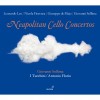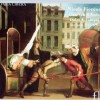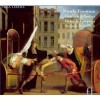传记
Nicola Fiorenza (1700?-1764), composer and virtuoso Neapolitan violinist, lived during the first half of the XVIII century. His musical production,whose manuscripts are preserved for the big part in the Library of the Conservatorio di Musica S.Pietro a Majella in Naples, is composed of 15 concerts with different instrumental organics, 9 symphonies whose principal instrument is the violin (that sometimes proposes pieces with a lot of virtuosities typical of the solo concert), some pieces for one or two instruments with continuo and two cantatas. Skilled virtuoso, Fiorenza had assimilated both the style of the elegant Baroque of French school, and the “a terrazze” style, the improvised language typical of the Venetian composers.
He knew the style of the Concerto Grosso of Corelli very well, to which he joined a dressy counterpoint maybe too much present for the style of that time. Fiorenza elaborated different styles, filtering them through his sensitive predilection towards the Neapolitan party music and the popular melody, developing a personal composite language that doesn’t consider him belonging to one of the “schools” of his time. From a formal point of view and for the choice of the instrumental organic,his compositions have not a strong stylistic individuality in comparison with the composite canons of the first part of the XVIII century, but the production of Fiorenza seems to reflect the schemes and the composite forms typical of the late Baroque.
His choice of the incisive brevity of the thematic figures is typical of the XVII century, that almost never overcomes the breath and the circle of one or few beats. Fiorenza’s solo compositions show his research of virtuosities, but he never lapses into a rash virtuosity, on the contrary he maintains a gallant taste.










